The Case of The Leaking Post Frame Building Window
Sir Arthur Conan Doyle’s hero – renowned sleuth Sherlock Holmes, was forever solving mysteries entitled “The Case of Something or Other”. To solve this particular mystery neither Holmes, nor Dr. John Watson’s skills will be required. Nor shall we need a call to Scotland Yard.
Reader Justin in California writes:
“Hi
I’m hoping you can tell me the truth about why windows might be leaking in a pole barn with metal siding.
I’m in California and had a local builder put this building up.
All of my windows leak…well they seep.
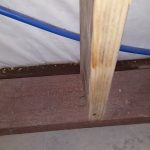
It’s not a lot and only happens when it rains a lot or rains with winds.
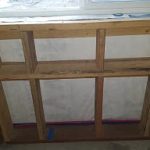
I see there is a water trail starting at the bottom of all windows and goes down.
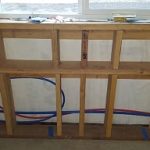
I have attached photos of the inside and outside.
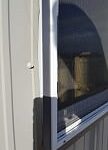
I was told that water hits the J channel then goes down and goes between the metal siding and the window wrap (Tyvec) and out the bottom….is this true?
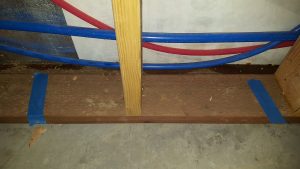
Not asking for a fix just does that water travel between metal and the wrap?
Thanks.
P.S.
The blue frog tape marks where the leaks are.
The photos w/ the pex pipe…the water has been turned off so no water leaks coming from the pex pipe.”
Mike the Pole Barn Guru writes:
There’s truth as to why you are getting leakage around your windows (drum roll please) – poor installation.
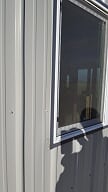 Another truth – water hits your building’s J channel then goes down and goes between the metal siding and window wrap (Tyvec) and out the bottom. This does not make it a correct installation however.
Another truth – water hits your building’s J channel then goes down and goes between the metal siding and window wrap (Tyvec) and out the bottom. This does not make it a correct installation however.
When I was constructing post frame buildings two decades ago we initially were doing an installation similar to what your builder did. We used a typical flanged vinyl window and trimmed it out with a surround of four sticks of J Channel. I had some really great building crews, guys who took a great deal of pride in their workmanship. Even then, we had call backs for over 10% of our window installations due to leaks! Construction callbacks are costly and crews hate going back to do rework. We solved this problem by going to vinyl windows with integrated J Channels. Poof – leak problems pretty much disappeared.
Your building has a Weather Resistant Barrier (good choice as it allows moisture from inside wall cavity to pass out, while keeping outside moisture out).
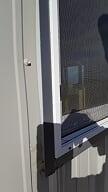 Before placing a window in a framed opening, a generous bead of caulking should be applied to seal between nailing flange and Weather Resistant Barrier. After installing window in opening, place self-adhesive flashing tape (3M All Weather Flashing Tape 8067 or similar) around the window. With steel trim J Channel, a serious bead of caulking must be placed between flashing tape (or flange if tape was omitted). As J Channel corners are overlapped, caulking needs to be placed between each overlap. Special attention needs to be given to lower corners of window to adequately and completely seal tops of ribs, so water running down panels cannot get between steel siding and Weather Resistant Barrier.
Before placing a window in a framed opening, a generous bead of caulking should be applied to seal between nailing flange and Weather Resistant Barrier. After installing window in opening, place self-adhesive flashing tape (3M All Weather Flashing Tape 8067 or similar) around the window. With steel trim J Channel, a serious bead of caulking must be placed between flashing tape (or flange if tape was omitted). As J Channel corners are overlapped, caulking needs to be placed between each overlap. Special attention needs to be given to lower corners of window to adequately and completely seal tops of ribs, so water running down panels cannot get between steel siding and Weather Resistant Barrier.
Inside closures (https://www.hansenpolebuildings.com/2015/12/the-lowly-inside-closure/) or Emseal Self Expanding Sealant Tape Closures (https://www.hansenpolebuildings.com/2016/03/emseal-self-expanding-sealant-tape-closures/) can be placed between top edge of steel siding below window and Weather Resistant Barrier to further limit a possibility of water entering your walls.
Wa-lah! Case solved.
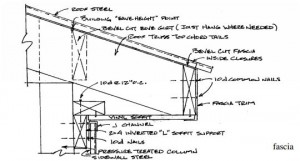
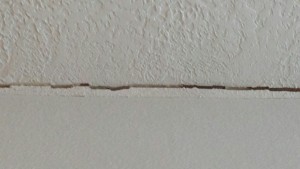








Hi what if they weren’t installed correctly and we spray foamed the interior? How can this be fixed???? Epic pain in the butt; however, same thing is happening to our home too! We see water around baseboards!!!!
Thanks!
If your building has steel siding, the panels around the window can be carefully peeled off from the spray foam. If your building is under a year old and you hired a builder, this fix should be done by the builder under warranty at no cost to you.